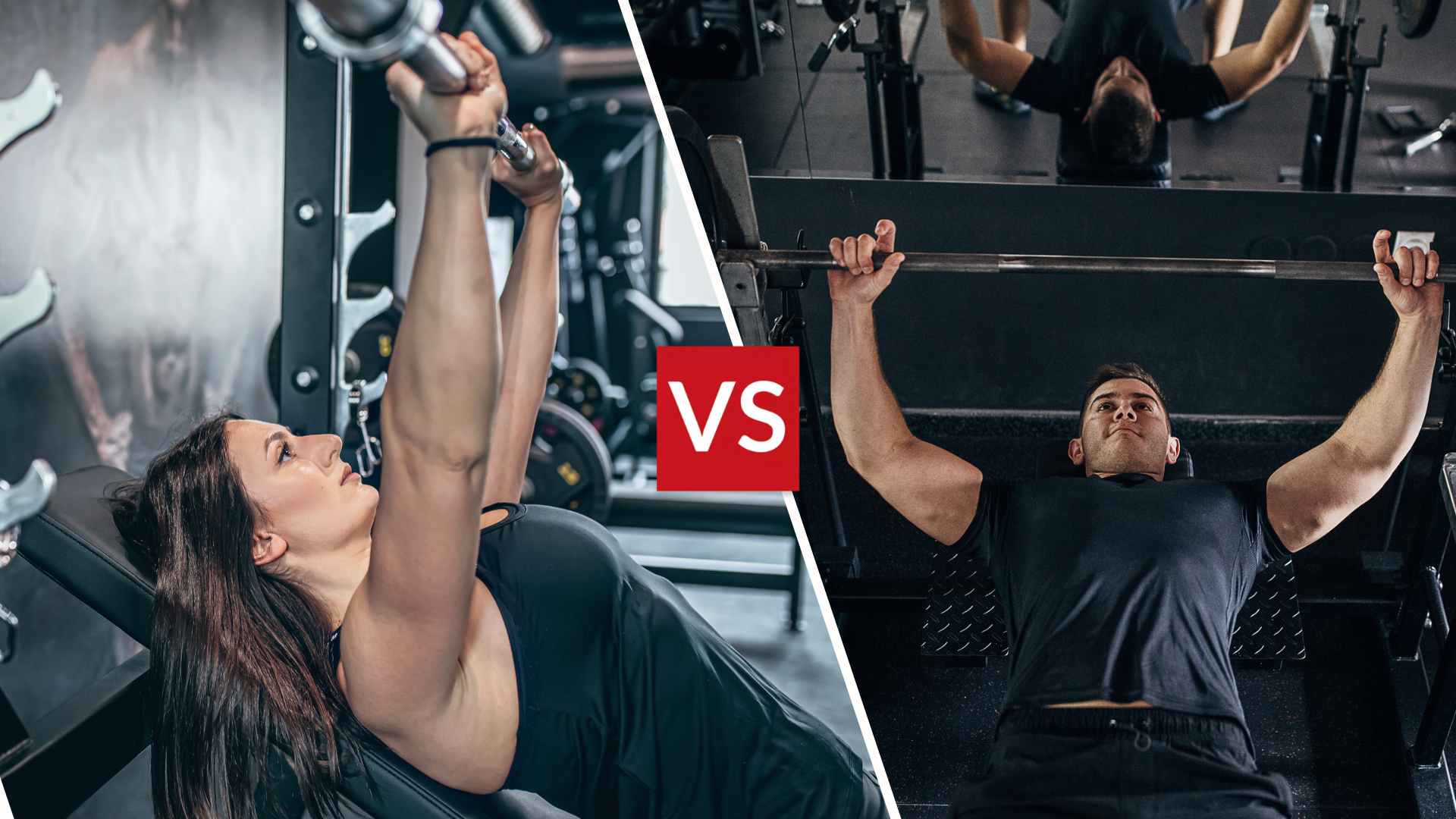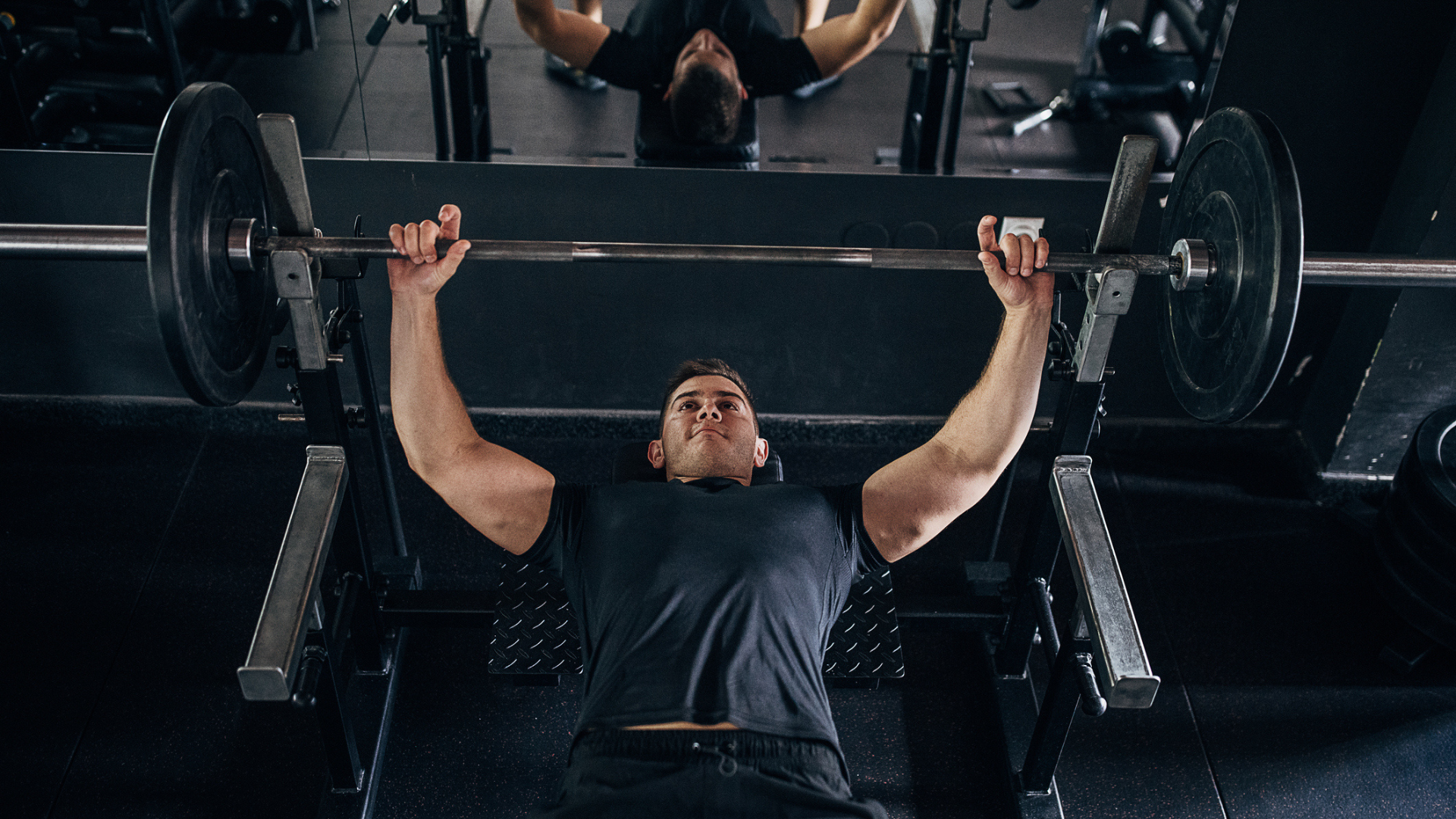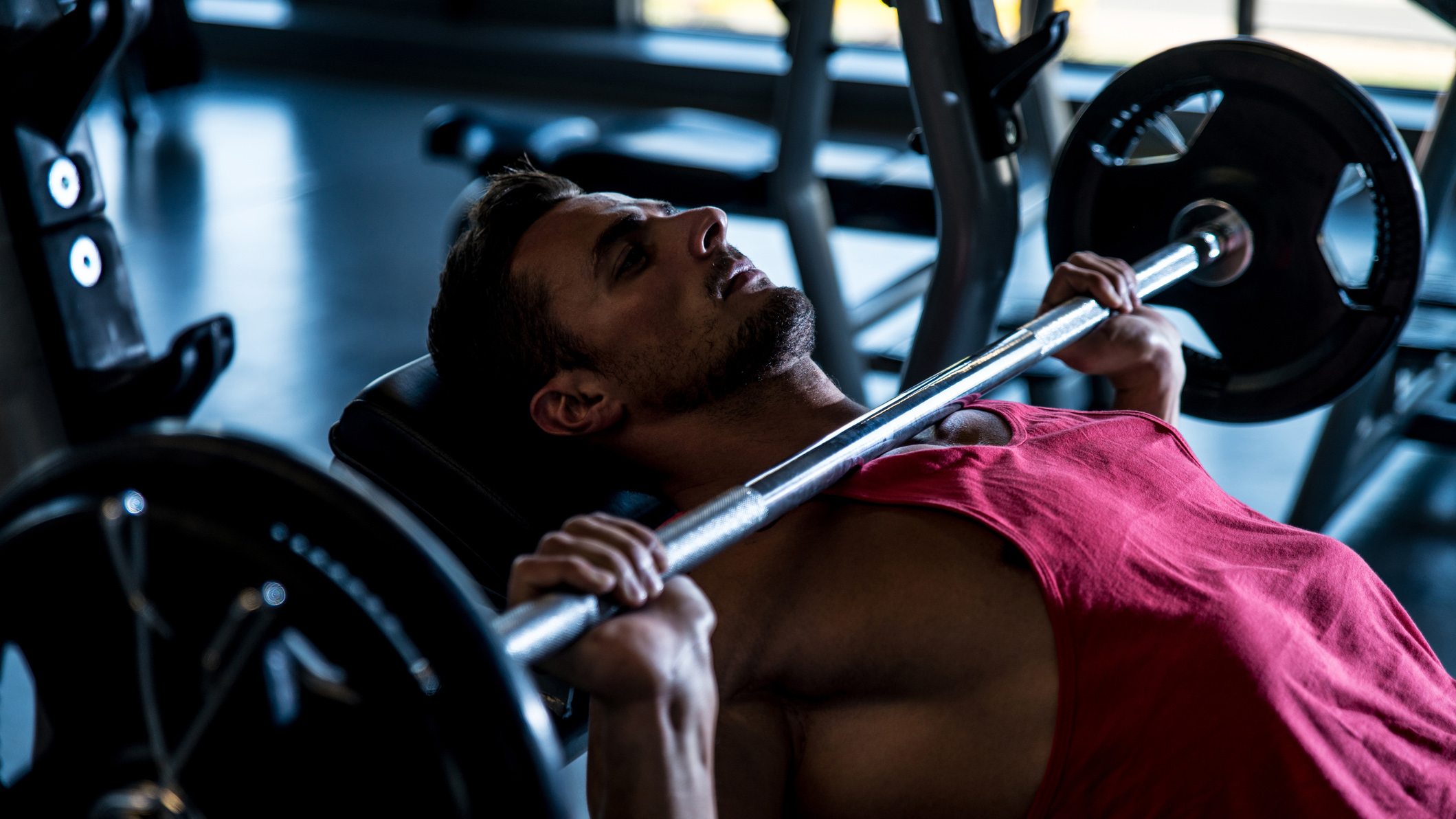

The chest press is one of the greatest strength exercises of all time. Walk into any gym, or box, and you’re guaranteed to see at least one person led underneath the barbell (or with a pair of dumbbells), trying to push as much weight as possible. Sometimes they’re even accompanied by a buddy (or two) who stands above them shouting ‘DRIIIIVE!’.
But, this long-standing staple can still cause confusion when it comes to where the weight bench is best placed for the ultimate chest gains: is it better flat or at an incline? Ultimately, we want to opt for the position that’s going to give us the most bang for our buck, but knowing which that is exactly is the question. So, with the help of an expert, we try to answer it.
Flat pressing: a closer look

“The reality is that the flat bench press is an incredibly effective way to build explosive power and strength in your chest,” says Sean Murphy, Certified Personal Trainer and Global Personal Training Director at Ultimate Performance.
“Whether you’re using dumbbells or a barbell, with the angle of the bench being flat, you are generally targeting the mid-muscle fibres of the pecs.” However, this is a compound exercise, so you're recruiting more than just your chest muscles whilst laying flat. “Other secondary muscles hit during a flat bench press include the shoulders (anterior deltoid) and the arms (triceps brachii),” says Sean.
You’re also able to increase the weight load a lot more when flat pressing, as opposed to when you're on an incline, so if you’re looking to build maximum strength the flat bench is your best bet. It’s also easier on your shoulders too, as the focus is predominantly on the chest. Although, if you suffer from really bad shoulders or are a beginner, you could always actually ditch the bench and flat press from the floor. This is a great option as it reduces your range of motion and stops the shoulders from externally rotating.
Either way, Sean says if a strong and muscular chest is your goal, then the flat bench press should be making an appearance somewhere in your push programme.
Incline pressing: a closer look

By adjusting your weight bench to a slight incline, you take the focus away from the mid-area of your chest and direct it more to the upper chest and place more emphasis on the shoulders. This isn't a bad thing, as it will help pump out the top of your pecs, giving them that strong appearance.
Get all the latest news, reviews, deals and buying guides on gorgeous tech, home and active products from the T3 experts
“The difference is subtle, and both the flat and incline presses will give your upper body the proper stimulus to grow the muscles in your chest, but the incline press will slightly shift the emphasis towards those upper fibres and your shoulders, which is great if you want to achieve that V-shaped body that so many people crave,” says Sean.
Weight-wise, you’ll find you’re not able to push the same on an incline as you are benching flat, but this is just because a different stimulus is required. As your shoulders come into play more in the incline press, it’s probably not one if you’re suffering from any injuries in this area (although always consult with your GP first before trying any new exercises).
Which is better: flat or incline press?
Instead of seeing one as better than the other, Sean says to adopt a mindset that these are “complementary exercises”. At the end of the day, both exercises target the chest, triceps and shoulders to an extent, so that’s a box ticked but, ultimately, it depends on your goals and personal preference as to which you'd favour more.
If strength and power is your goal, then the flat bench is a great choice, because it allows you to push more weight. “The heavier the weight, the better the stimulus for hypertrophy, and the stronger you will become,” says Sean. But, if you feel your upper chest is a weakness and you want to give your shoulders a workout too, then incline is a great option. On the other hand, if your upper chest was super strong, but you felt your mid chest needed some work, you'd go flat - prioritise your weakness.
Both pressing positions should (respectively) have a place in your training plan and, if you want a comprehensive chest workout, including both is a good way to go. Many people will choose one of the positionings for their heavy lift (often the flat bench), followed by the incline as an accessory.
“The reality is that both lifts are very effective exercises for giving your upper body an incredible pump and to increase size and strength," says Sean. "If you’re a total beginner, I would recommend the flat bench to start with, and as your numbers increase, your skill levels improve and your strength develops, then you can move onto the incline bench press and give your chest muscles a different stimulus to grow.”

Bryony’s T3’s official ‘gym-bunny’ and Active Staff Writer, covering all things fitness. She is a certified personal trainer and also a part-time fitness instructor. In her spare time, you will find her in her natural habitat - the gym - where her style of training is a hybrid of bodybuilding and powerlifting. Bryony loves writing about accessible workouts, nutrition and testing innovative fitness products that help you reach your fitness goals and take your training to the next level.